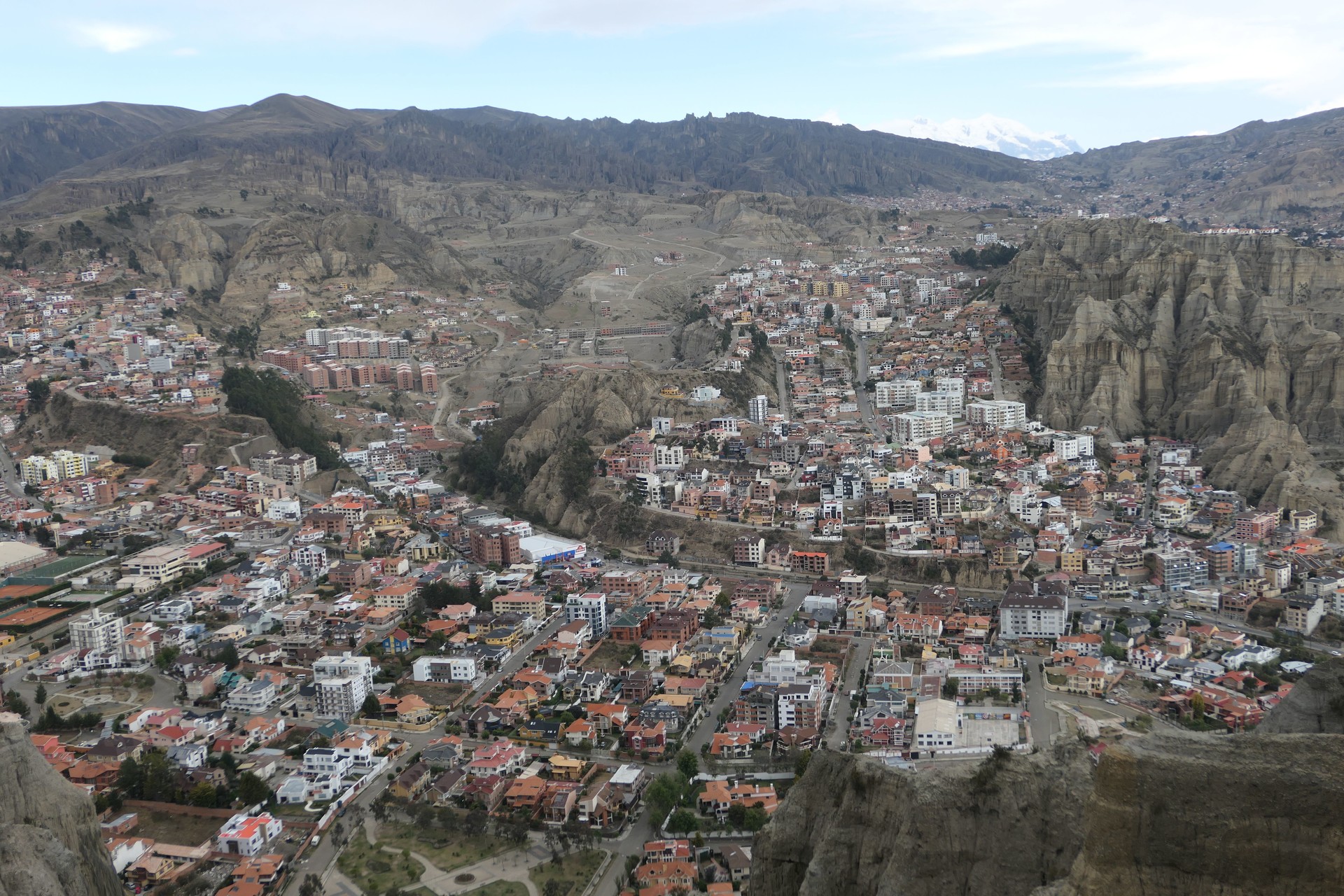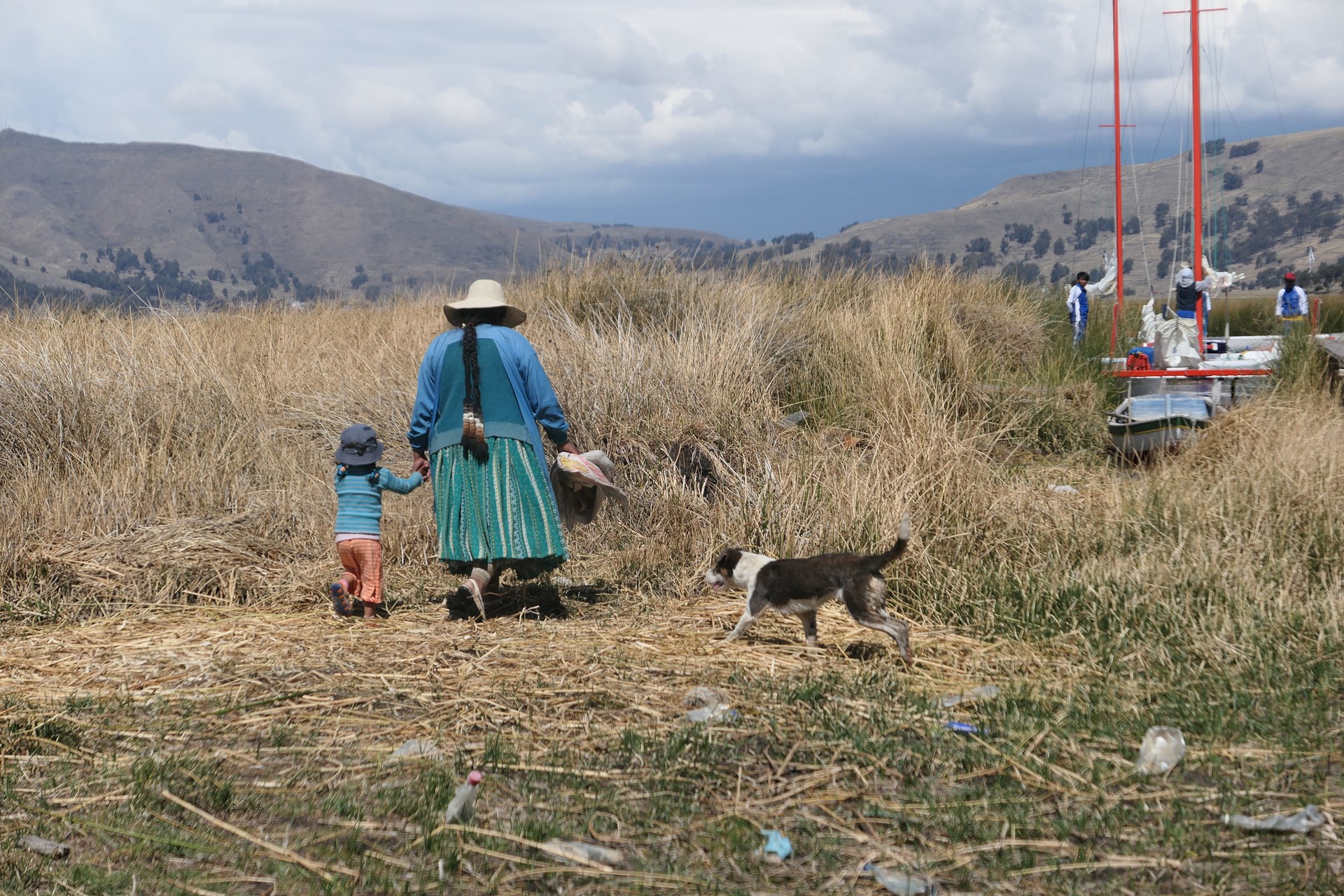Eco-responsible travelling: the ultimate guide in 15 steps (part 1)
The complete guide: How to travel in an eco-responsible way? My 15 tips!
It's advisable not to exceed 1.2 tonnes of CO2 emissions per person per year to comply with the guidelines and thus reduce global warming. Yet that amounts to a cheap single flight from London to San Francisco.
By way of comparison, the average British citizen produces 12.1 tonne of CO2 emissions every day; in the United States it's 21.2 tonnes of CO2 and in Somalia it's 0.1 tonnes.
That's what made me decide not to take a plane anymore.
It was just after my trip to Nepal: Link. (That's why the majority of my articles talk about my experience in Iceland: Link, Japan, Bolivia..., going back to over a year ago now!)
But that wouldn't allow me to stop myself from travelling.
On the contrary, I'd prefer to stop going on small trips and instead go on a longer trip around the world in less than a year, and all that without taking any planes!
Because yes, yes, I don't think we should stop travelling in order not to emit any carbon, but rather be sensible about it.
When we travel, we could have a tick-list when it comes to the environment: finding out about new ways we can respect the planet, seeing ocean and beaches full of plastic with our own eyes, or even looking at workers and their horrible conditions...
Anyway, it's time to implement some new habits which will do all of us some good!
Therefore, in this article, I have put together 15 pieces of advice (7 in the first part, 7 in the second part). They're points to consider which I find absolutely essential to take on board.
It's just because travelling and respecting the environment really get to me, that I have taken the time to write the most complete guide as possible. I honestly hope it will help you.
You can find the second part of the article here: Link.
I hope this doesn't put you off...
Because of course, we can't control the amount of carbon emissions from planes, the chemical products used in hotels or the plastic used in souvenirs sold in our holiday destinations...
But we can choose our means of transport, our hotels and accommodation, and shopping which causes less damage to the environment and has more advantages for the local populations.

1. Understanding what eco-tourism is (and watching out for 'greenwashing')
Before starting, I would also like to mention the consequences of the increasing number of travellers, the over-tourism on the most popular destinations in the world.
For example, in the Philippines, the local government closed Boracay island due to pollution. With more than 2 million visitors a year, the ecosystem couldn't manage the multitude of people, and the local government had to take drastic measures to save it, even if the 17,000 people who live there depend mainly on tourism to earn a living.
Sustainable tourism (ecotourism or even green travelling) consists of making simple choices to reduce its negative impact on a given destination.
Often, it will be accompanied by environmental activities, such as volunteering work with charities which protect nature, or something.
Individually, every one of our choices only makes a small difference as a whole. But collectively, these small things add up and can have an enormous impact.
Eco-friendly and responsible travelling is becoming more and more fashionable, however you must keep in mind that many companies take advantage to make you buy their products or pay for their services by saying they're "natural", "eco-friendly", and it's all 'green packaging'. This is unfortunately the case for some organisations which will use your help or donations to invest in things which aren't exactly environmentally friendly.
Always do some research on package holiday companies, and be suspicious of empty words and marketing strategies which are behind it.
2. Choosing a destination which respects the environment
When it comes to eco-friendly travelling, the place you visit is just as important as what you do there.
For example, countries like Morocco and Costa Rica invest massively into protecting their beaches and their surf spots against rising sea levels. Tourism is an important part of their economy.
As a consequence, they suffer the social and financial impacts of pollution, ocean acidification and rising sea levels more severely than other countries.
However, the United States and Australia have cancelled environmental regulations in recent years, despite their promises made to the Paris Agreement on climate to reduce the amount of carbon emissions.
So, stand your ground, and visit countries who fight against climate change.
Hence the next point...

3. Keeping in mind that we vote for things with our holiday money
This is probably how we can make the biggest difference when we go travelling. If we want to admit it or not, money makes the world go round.
Almost everything we do which destroys the environment the most attributes to financial gains.
That means that choosing where we spend our money can make a big difference in the increase in the tourism market.
For example, choosing to go with a guide or an agency who cares about the environment, even if that means paying a little more, or taking part in conservation efforts, or even staying in eco-friendly hotels can really change the story.
We mustn't forget that when we choose to spend our holiday money on companies who respect the environment, it opens the way for further development of the company.
4. Travelling by plane and other means of transport
Flying is still the worst means of transport in terms of CO2 emissions.
The best alternatives would be cycling, or using public transport like the bus, the train, hitchhiking, car-share, or even, why not, sailing (and I'm not talking about going on cruise ships).
If you want a better idea:
- flying: up to 350g CO2/km
- driving: around 170g CO2/km
- going by boat (a ship or a cruise): 60g CO2/km
- travelling by bus: 60g CO2/km
- travelling by train: less than 10g CO2/km
That's why if you have the choice of where to go, countries closer to yours and the shortest distance would be better
...
But if you have to fly, and you don't really have a choice, the best way would be to book a direct flight. During take off and landing is when planes emit the majority of their kerosene. In addition, try to inform yourself about the latest companies, which seem "the greenest".
Because flying does not only produce an enormous carbon footprint, but also uses a tonne of resources such as plastic cups and drinks, as well as food waste. Unfortunately, global carbon emissions continue to rise every year, as more people are flying than ever before.
That means that we should pay a bit more not to take a flight with a stopover and to help the planet.
In terms of getting around once you're at your destination, try to visit places by using an electric car, a bike, a scooter, or even better: on foot.
Public transport is also an excellent way to mix with the locals, literally!
But going for walks to explore and immerse yourself in the city and what's around us is by far the best option.

5. Choosing markets and small local businesses as your number one
We have a tendency to forget this point, which is of great importance: buying things at a market from local producers and avoiding fast food or supermarkets with their shelves stacked with imported products. Because it's thanks to our money that we support these local businesses and firms, and that we allow them to compete with international brands.
All that helps to promote the social and economic welfare of local populations, (especially when they are poorer).
Don't hesitate to immerse yourself in the local culture: get involved and don't just be an observer.
Because part of the pleasure of travelling is also having the opportunity to get out of your comfort zone and try different food, listen to different music and explore different cultures.
Also, pay attention to this point: not all local foods are sustainable.
In Iceland, eating whale meat is very normal amongst the tourists and the locals. The disadvantage is that whales are endangered and by supporting the industry, it supplies the demand of whale meat and negatively affects the whale population.
And that doesn't stop at food. Who makes the clothes we wear every day, and what conditions do they work in? Have you asked yourself that question?
I know full well that it may be tempting to buy clothes from Zara, H&M or wherever... Who doesn't like buying jumpers for €10?
But the reality is that many of these big affordable clothes companies (also known as 'fast fashion') don't pay their employees.
This fashion industry is guilty of exhausting the Earth's resources and of using cheap "slave" labour to provide us with our cheap clothes.
That's why I wanted to make this point: it's important to think of these aspects when buying clothes and to choose fair trade clothes.
6. Choosing eco-friendly accommodation
Eco-hotels or green hotels incorporate practices and green products in their economic models. The majority of accommodation have eco-friendly facilities such as recycling programmes in place and meals which are prepared by using local bio products. Housekeeping practices include the use of non-toxic cleaning products and the reuse of sheets and towels. And eco-hotels use refillable soap and shampoo instead of individual bottles. It's a big bonus which turns out to be a good alternative! They don't use them everywhere, but fortunately there are websites where you can do your research.
For example:
* 'EcoBnb': 'EcoBnb' sorts accommodation options in terms of how eco-friendly they are according to their principals and reviews.
* 'Green Pearls': 'Green Pearls' lets you browse through eco-friendly hotels according to the type of holiday you're looking for, like a honeymoon, a snorkelling holiday or a vegetarian holiday. There's also a ranking system to help you see how eco-friendly a place is in terms of others in the same area.
By knowing that the more we share accommodation, the better it will be for the planet, that's why 'CouchSurfing' (sleeping at one of the inhabitants' place) can equally be a good option for people who love being in contact with the locals and who don't particularly have a large budget.

7. Managing your energy consumption
In addition to the last point, energy consumption represents around 60% of a hotel's carbon emissions. In order to travel whilst respecting the environment, we should pay attention to resource management, even in a place which isn't ours. And that comes with remembering the basic rules:
* always switch off the light and adjust the thermostat before going out for the day,
* close the blinds during summer and open them during the coldest months,
* reuse towels and flannels,
* do the laundry using a cold temperature cycle,
* use a clothesline or a shower rail to dry clothes,
* have a shorter and colder shower,
* keep the doors closed to other rooms as soon as they heat up or cool down.
Until tomorrow, for part 2 which has some points which will definitely surprise you!
Photo gallery
Content available in other languages
Want to have your own Erasmus blog?
If you are experiencing living abroad, you're an avid traveller or want to promote the city where you live... create your own blog and share your adventures!
I want to create my Erasmus blog! →








Comments (0 comments)